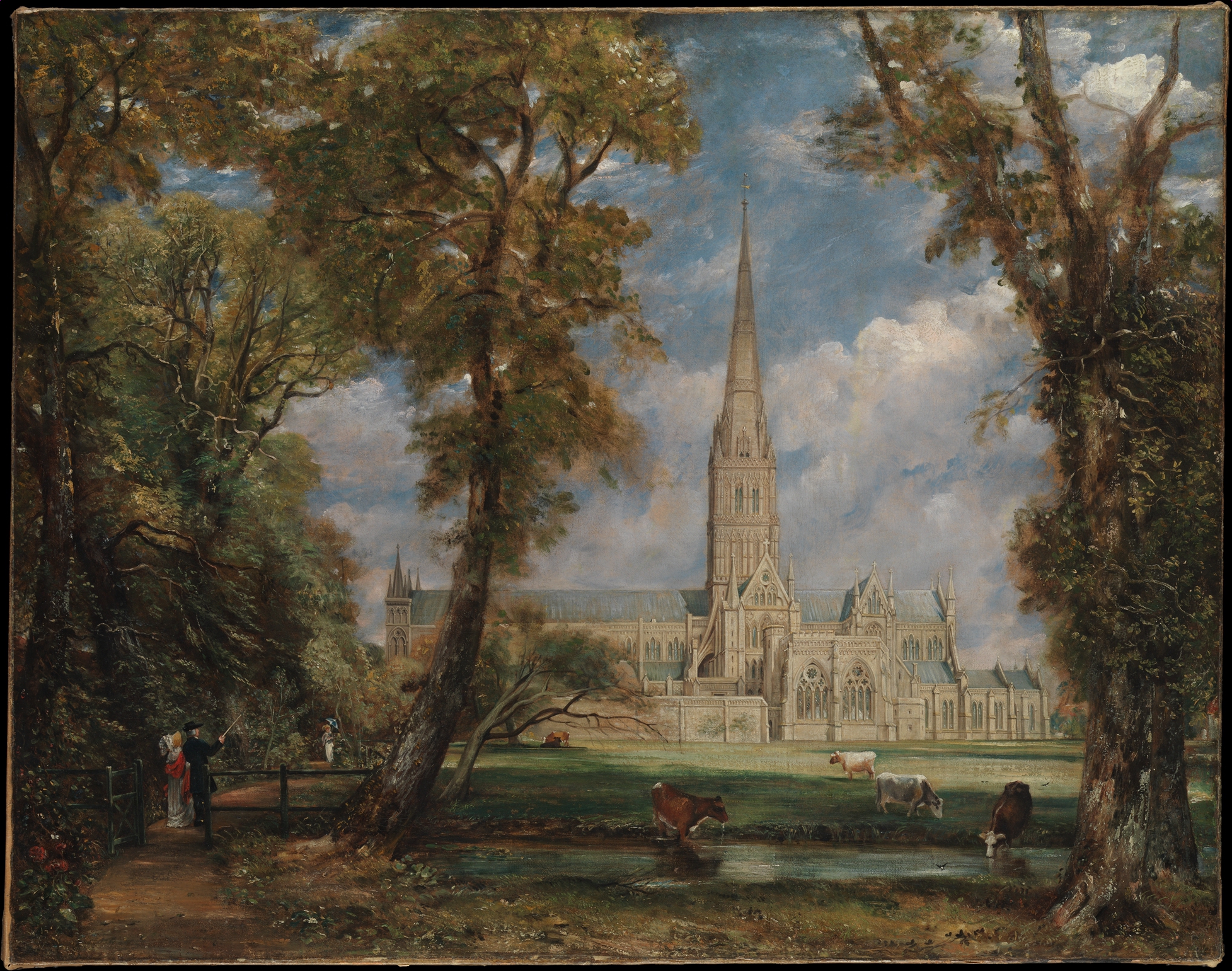Introduction
The Church of England is an institution that is part of the English state. While the history of the Church in England pre-dates the actions of the latter Tutor monarchs, their actions result in an ecumenical body that is unique and independent from the Roman Catholic Church. The Church of England has many distinctive aspects, which are important to the Church’s identity. While certain aspects would fluctuate over time, many would be a constant. This curation attempts to present aspects that have been defining factors in the Church of England. Some have been constants predated the disruption of the Tutors, some emerge after the Tutors, and some will emerge in the following decades. However, all can be seen as important aspects and characteristics of the Church of England, in the last century and today.
John Constable, Salisbury Cathedral from the Bishop’s Grounds, 1825, Oil paint upon canvas, “34 5/8 x 44in.” Metropolitan Museum of Art, New York, 50.145.8

Salisbury Cathedral is one of the Church of England’s beautiful cathedrals. While cathedrals themselves are definitely a defining aspect of the Church of England, they give more insight. Cathedrals show episcopal Church governance, something which was present before and after the Tutors’ intervention, a cathedral being the seat of the bishop for their diocese. In this painting, one can see the Bishop and his wife walking on the path in the lower left of the painting.
Laurits Regner Tuxen, The Anointing of Queen Alexandra at the Coronation of King Edward VII, 1902-1903, Oil upon Canvas, The Royal Collection Trust, 404466
This painting depicts the anointing of Queen Alexandra, as a monarch. She would serve as consort to King Edward VII. Here one can see the Archbishop of York, one of the most senior clerics in the Church of England, anointing the Queen. The monarchy is an important aspect of the Church of England, while the Tutors actions shaped the Church of England. The monarch serves as the head of the Church of England, here this is King Edward VII.
Book of Common Prayer, Bible, and Book of Psalms, 1715-1728, medium paper.
The Book of Common Prayer was an addition from the Tutor period in the Church of England. This book of liturgies, amongst other things, would be a key aspect of the Church of England, while it would go through several revisions, particularly under the Tutors, it would be the only approved liturgy in the Church of England, for a large part of its history, when seperated from the Roman Catholic Church. The Book of Common Prayer provided unity among verying theological persuasions, while all using the same written liturgies.
Maull and Polyblank, The Lord Bishop of Oxford, 1859, medium “Albumen Silver Print,” held by Getty, 84.XB.949.4.37
This image shows Samuel Wilberforce, who served as a Bishop in the Church of England. He was an important figure in the Oxford Movement. The Oxford Movement, began in the first half of the nineteenth century, working to commit the Anglican faith to its Catholic roots. This movement would lead to Anglo-Catholicism, an important theological tradition in the Church of England. Anglo-Catholicism would exist in the Church of England along with other theological traditions, showing the important characteristic of the Church of England, its ability to maintain multiple theological traditions, or “churchmanship” categories at once.
Maull and Polyblank, His Grace the Archbishop of Canterbury, 1859, medium “Albumen Silver Print,” held by Getty, 84.XB.949.4.40
This image shows John Bird Sumner, who served as the Archbishop of Canterbury, the highest-ranking cleric in the Church of England. He was a notable member of the Evangelical theological tradition in the Church of England. Like Samuel Wilberforce, he represents one of the theological traditions which was able to be present within the Church of England. This is an important aspect of the Church of England. There are other groups within the Church of England besides the Anglo-Catholics and Evangelicals, however, these are two notable movements that become prominent in the nineteenth century.
Bucklebury Church, Berkshire, medium “aquatint, printed in brown,” artist and date unknown, held by Royal Collection Trust, 700052
This is a work of a parish church in England. Parish churches have been such a present aspect of the English landscape. They have also played an important role in presenting the Anglican faith to the people of England, and have been a present aspect of many English people's lives. For corporate worship, weddings, and funerals. In this piece, one can see the graveyard, and the local churches provide a grounding place of history for families, cities, and the nation.
No comments:
Post a Comment